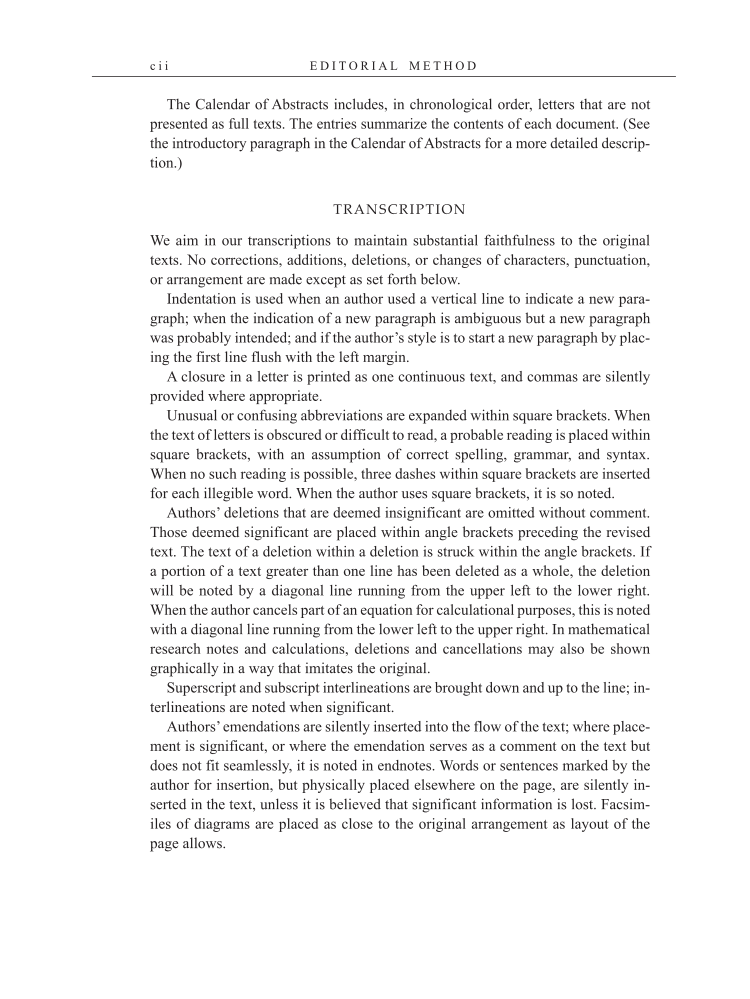c i i E D I T O R I A L M E T H O D The Calendar of Abstracts includes, in chronological order, letters that are not presented as full texts. The entries summarize the contents of each document. (See the introductory paragraph in the Calendar of Abstracts for a more detailed descrip- tion.) TRANSCRIPTION We aim in our transcriptions to maintain substantial faithfulness to the original texts. No corrections, additions, deletions, or changes of characters, punctuation, or arrangement are made except as set forth below. Indentation is used when an author used a vertical line to indicate a new para- graph when the indication of a new paragraph is ambiguous but a new paragraph was probably intended and if the author’s style is to start a new paragraph by plac- ing the first line flush with the left margin. A closure in a letter is printed as one continuous text, and commas are silently provided where appropriate. Unusual or confusing abbreviations are expanded within square brackets. When the text of letters is obscured or difficult to read, a probable reading is placed within square brackets, with an assumption of correct spelling, grammar, and syntax. When no such reading is possible, three dashes within square brackets are inserted for each illegible word. When the author uses square brackets, it is so noted. Authors’ deletions that are deemed insignificant are omitted without comment. Those deemed significant are placed within angle brackets preceding the revised text. The text of a deletion within a deletion is struck within the angle brackets. If a portion of a text greater than one line has been deleted as a whole, the deletion will be noted by a diagonal line running from the upper left to the lower right. When the author cancels part of an equation for calculational purposes, this is noted with a diagonal line running from the lower left to the upper right. In mathematical research notes and calculations, deletions and cancellations may also be shown graphically in a way that imitates the original. Superscript and subscript interlineations are brought down and up to the line in- terlineations are noted when significant. Authors’ emendations are silently inserted into the flow of the text where place- ment is significant, or where the emendation serves as a comment on the text but does not fit seamlessly, it is noted in endnotes. Words or sentences marked by the author for insertion, but physically placed elsewhere on the page, are silently in- serted in the text, unless it is believed that significant information is lost. Facsim- iles of diagrams are placed as close to the original arrangement as layout of the page allows.
